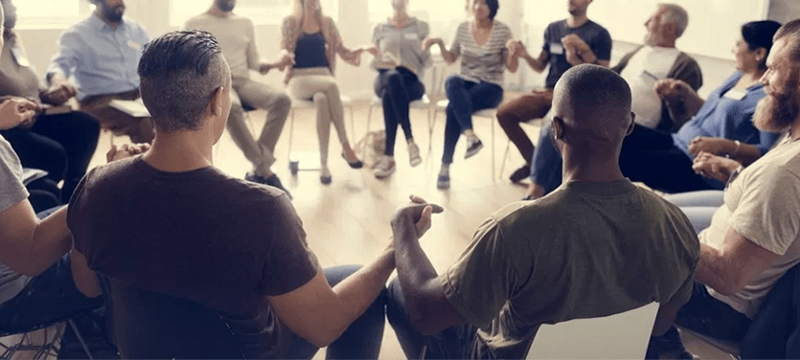On her work in recovery and stigma-reduction in behavioral health
TPN.Health connected with Jennifer Holmes, LCSW, at her home office in Metairie, where she operates a private practice. Jennifer has specialized training working with individuals facing substance use and/or addiction issues. Likewise, she herself identifies as a person in long-term recovery. She is a native of Metairie and has been practicing in the New Orleans area for the past twenty-five years. As she has spent most of her professional and personal life in and around New Orleans, the conversation naturally touched the drinking culture of the city.
Unquestionably, substance use issues know no bounds across geography, gender, race, socioeconomics, or any other arena. It’s everywhere. However, when considering these issues in a specific cultural space, such as New Orleans, it can be helpful to know how substance use is woven into people’s lives. In other words, one could ask, “Culturally, what is accepted and encouraged and what isn’t?” to learn how substance use interacts with people’s lives. It is deeply part of the social and economic fabric here in New Orleans, so considering the nuances of that as it relates to people’s lives could contribute to an integrated perspective.

“While most of my clients don’t come in specifically for a drug and alcohol problem, almost all of them are impacted by it in one way or another, either personally or through family or friends with substance use issues,” says Jennifer of her experience with clients. Not everyone has a substance use disorder, but it is helpful for clinicians to consider how drugs and alcohol may affect the lives of clients regardless. Jennifer expressed that it is important that there are professionals out there who understand this issue from as many different perspectives as possible.
When I asked Jennifer what she sees in the way of recovery resources in the local community, her answer was two-fold. For instance, there is no lack in inpatient and outpatient treatment programs; however, a barrier to that for many people is cost since a number of the places for treatment do not take insurance. There are also folks with a true barrier — the inability to pay out of pocket coupled with a lack of insurance. On the other side of the coin, 12-Step programs, of which Jennifer is a big fan, abound in the local community. These are free and available seven days a week to all people, so cost is not a barrier here.
Of 12-Step groups, Jennifer says that they foster opportunities for people not only to be helped but to help others, to be a part of a community through forming connections. This along with the opportunity to tap into spiritual practices creates opportunities for dopamine stabilization. Although the 12-Step programs did not set out intentionally to regulate dopamine, Jennifer notes that this is exactly what they end up doing in practice.
What Jennifer often sees as a barrier with her clientele and 12-Step programs is the stigma clients associate with being in a program, such as Alcoholics Anonymous or Narcotics Anonymous. What comes up are preconceived notions about what it means to the outside world to be a in a 12-Step program, principally a sense of shame. Talk of stigma among clientele led us to discuss Jennifer’s passion project, that is, stigma and fear reduction in the behavioral health community at large.
The project comes to life for Jennifer through advocacy work. For instance, in 2015 she served as the co-chair of the UNITE to Face Addiction National Rally in Washington, D.C. The event included a day-long concert of groups who were either in recovery themselves or felt very strongly about recovery. It also encouraged recovering individuals and their families and friends to become civically involved to celebrate the community’s national recognition. Jennifer noted that the event coincided with the release of Facing Addiction in America: The Surgeon General’s Report on Alcohol, Drugs, and Health, a piece of literature that she believes should be required reading for anyone in the field.
In addition to interaction with news outlets to change their language around addiction over the years, Jennifer was also instrumental in changing the language of the application and license renewal application form for the Louisiana State Board of Social Work Examiners (LABSWE). Prior to the language change in 2015, the forms asked applicants if they had participated in drug or alcohol treatment. Because this question inquired about a diagnosis, it violated the Americans with Disabilities Act (ADA), which includes substance use disorders as valid impairments.
If applicants answered “yes,” to the question, they had to jump through a series of hoops, which meant submission to an assessment, releasing records of their treatment, and entering LABSWE’s Impaired Professional’s Program. At the end of the process, Jennifer and colleagues were successfully able to convince the board to change the language so that it no longer violated the ADA and, therefore, did not impose burdensome professional consequences on those who had received treatment in the past.
Ultimately, what stigma creates is a sense of disconnect between those with alcohol and drug issues and those without. For instance, people often think that issues with drugs and alcohol are synonymous with frivolous people “being selfish” by simply seeking out opportunities to be high or drunk. Jennifer explains her experience of the reality of what goes on with addiction, “I think what really fuels the use is the sense that ‘I don’t want to feel the way I’m feeling.’”
In other words, substance use can serve as a way for people to tolerate existence in their bodies, a temporary solution to a chronic sense of not feeling connected or whole. Really, from this perspective, all humans are trying to make sense of being in their bodies and, naturally, seek solutions to discomfort. I mused that the solutions from person to person just look really different. Some solutions are temporary and turn into problems with visibly life-altering consequences. Other solutions, temporary or not, may be invisible to the outside world and therefore not arouse stigma.
The reality is that every person is navigating solutions to the problems of existing in a body. Jennifer’s work to reduce stigma is rooted in the belief that if people could frame things in this line of thinking, it would create opportunities for education and empathy, which are bridges over a chasm of misunderstanding.
Keep up with the progress of TPN.Health! Subscribe to our mailing list.
Sign up today to start connecting with clinicians in Louisiana.
